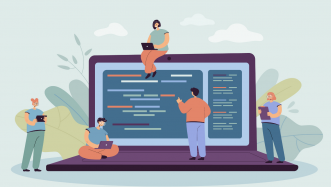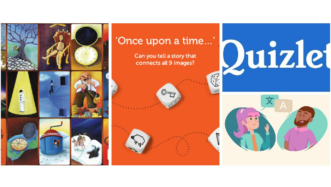‘Authentic’ materials are created for fluent speakers of a language, rather than for language learners. But more and more often teachers are realizing that real-life resources can be successfully used both in ESL lessons and outside the classroom to develop students’ language skills. The internet provides an endless source of videos and articles which, as you will see below, can benefit both you and your students.
Students are more likely to engage in up-to-date topics
With the world changing at a remarkably rapid rate, new and exciting topics are constantly springing to life. Students love sharing their opinions on these changes, as they impact their everyday lives. Authentic videos and articles on up-to-date topics can be used to spark a conversation, as well as introduce, practise or revise any aspect of language. They are a rich source of input and ideas that can be talked over in the lesson. See how it works in the Metaverse lesson, where students watch videos on different aspects of life in metaverse and share their opinions on the idea, but also practise the use of intensifiers.
Students should be exposed to real-life English
Being exposed to authentic language builds students’ confidence. They stop seeing English as a completely ‘foreign’ language, and gradually immerse themselves in it. They are therefore more likely to engage in conversations with other English speakers outside the classroom, which is the main reason why many of them learn the language in the first place! A well-designed lesson based on authentic materials will use the real-life language from the video and create opportunities for students to use it in different contexts. Check out the It’s kind of my favourite stuff lesson plan in which students not only watch an authentic video for listening comprehension, but also use the vague language learnt from it to describe their favourite things.
Even lower-level students can benefit from real-life videos. ‘Aren’t these too difficult for them?’, one could ask. Well, they might be. But so what? It is OK that they don’t understand every word from a video, because that is exactly what happens outside the classroom! They need to get used to hearing the language and, rather than trying to understand every word, they should listen for gist. It’s a perfect way to help them overcome their fear of language immersion. What‘s more, authentic materials can be used as a prompt for eliciting specific answers, like in the ‘You’re kidding!’ and other quick responses lesson.
Coursebooks don’t always provide what your students need
Coursebooks can be a great help when it comes to establishing the structure of a course, but they might lack what your students need at the moment. The topics that textbooks cover are sometimes outdated or simply not adjusted to quickly-changing reality. Authentic materials are a great way of supplementing these deficiencies. Take the Functional language for online meetings lesson, for example. It uses a funny video to teach what is of the utmost importance for any student working in English nowadays.
Textbooks don’t always revisit topics or grammar constructions taught at lower levels. But even if they do, each group of students is different and has different needs. So don’t hesitate to use authentic materials to revise topics which have not been fully understood by your students in the past. What we do and why we do it is a lesson aimed at A2 students, but the language addressed in it often turns out to be a challenge for higher-level students as well.
If you find yourself teaching students of a certain profession, there might not be a coursebook meeting their language needs. This is where real-life materials come in handy. If your students work in IT, try the lesson about blockchain. Are they in HR? Why do we glamourise overwork more than ever? will spark a great discussion on employees’ wellbeing. Do they work in logistics? Check out the How smart can a warehouse be? lesson plan. Are your students engineers or architects? Use the lesson about micro living.
Authentic materials create an excellent opportunity to turn a seemingly boring aspect of language learning into something fun
Grammar is often labelled as dull by students. The good news (for them, as well as you) is that a grammar lesson doesn’t have to be limited to gap filling exercises. Using authentic materials can turn it into something enjoyable and interactive. They will show students that grammar is an essential part of language because they will be presented with broader contexts for its use. For example, learning how to use comparative and superlative adjectives while sharing opinions on old and new technologies in the Better. Faster. Stronger lesson can be a real hit! And if your students hate reported speech lessons, use the Practise reported speech with Vogue interviews lesson plan to show your students how useful this grammar construction can be.
Reading in English could become a habit for your students
From reading the news to researching a topic of interest to finding a perfect cake recipe, your higher-level students can do it in English rather than in their first language. They just need to develop the habit. The amazing thing is that making your students read in English is easier than it has ever been, given the range of topics available online. The only obstacle is their reluctance, as it is challenging and takes more time. You can help students overcome these difficulties by using our Critical Reading Club lessons. Try Are we lonelier than ever? and other CRC lessons to encourage your students to read in English outside the classroom.
ESL Brains is more than happy to help you make the most of authentic materials. Find the lessons you need using our search engine or browse through the topics you can find near the bottom of the main screen. Have you been teaching with authentic materials? Tell us about your experience!












Very glad to have read it.
Will base my teachings on that principle from now on. Thanks
Good to hear it, Deyse. Have fun with it 🙂